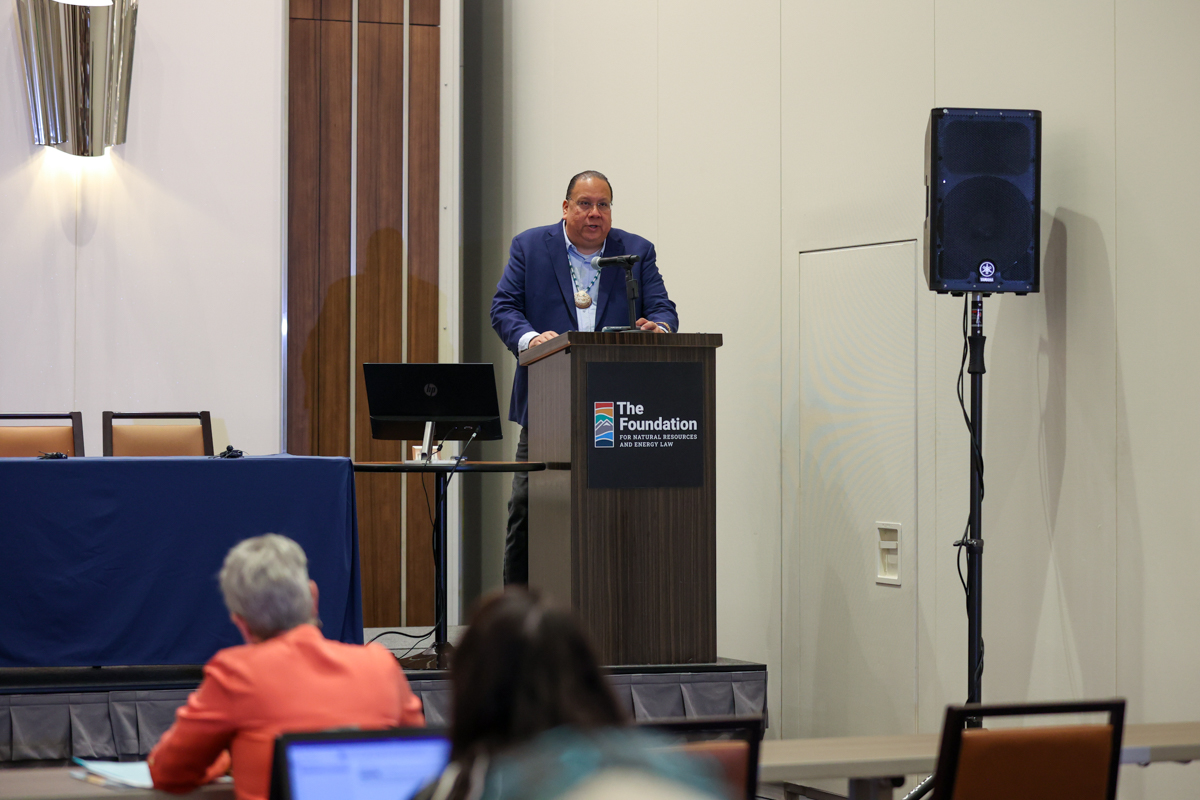Natural Resources and Energy Law Program welcomes Gov. Lewis
Velia Moncada
Gila River Indian News
The Foundation for Natural Resources and Energy Law formerly known as Rocky Mountain Mineral Law Foundation hosted two programs simultaneously – Natural Resource and Energy Development in Indian Country Special Institute and the premier of the annual Water Law Institute, at the Gila River Resorts and Casinos Wild Horse Pass on Nov. 2-3.
The Natural Resource and Energy Development Special Institute provides a comprehensive look at the legal issues that should be considered before commencing natural resources or energy development on tribal lands. The institute also includes crucial information about applicable Federal, Tribal, and State laws, as well as political and environmental considerations.
The Water Law Institute premiered its annual national legal program for attorneys and professionals involved and engaged with all things water throughout the country, including discussions and presentations on issues of water acquisition and management, water quality, climate changes and scarcity, and water litigation.
Gila River Indian Community Gov. Stephen Roe Lewis was featured as keynote speaker on climate change impacts and the need for innovation with water resources. Gov. Lewis outlined the GRIC’s history and its continued concern in water scarcity brought on by early western development that caused severe drought and famine to the Community. It caused GRIC to search for ways to conserve water and energy with federal and tribal aid through the years of modernization leading to the Community’s very own underground water storage area known as the Managed Aquifer Recharge Site Five (MAR-5).
“The Community has successfully implanted a modern water plant developed with our leadership; a water plant that puts into motion certain policies aimed to increase agricultural productions,” said Gov. Lewis to attendees of the institute, “We were looking at ways to bring back the flow of the Gila River, and looking at it through riparian projects/wetland projects in an official way.”
With modern conservation efforts throughout the years, GRIC has seen its restoration efforts of the Gila River slowly come back to its natural state before western development.
Water stored in the MAR-5 can be recovered when surface water shortages occur and is a source for farming irrigation while restoring riparian ecosystems that previously existed along the Gila River.
The institutes featured faculty from a variety of backgrounds and viewpoints, including representatives from oil and gas, mining and renewable energy industries, tribal governments, legal scholars and former federal officials who attended this networking and educational experience.
The Foundation for Natural Resource and Energy Law hosted the programs essential for anyone considering an investment or development projects on Indian or Tribal lands.

